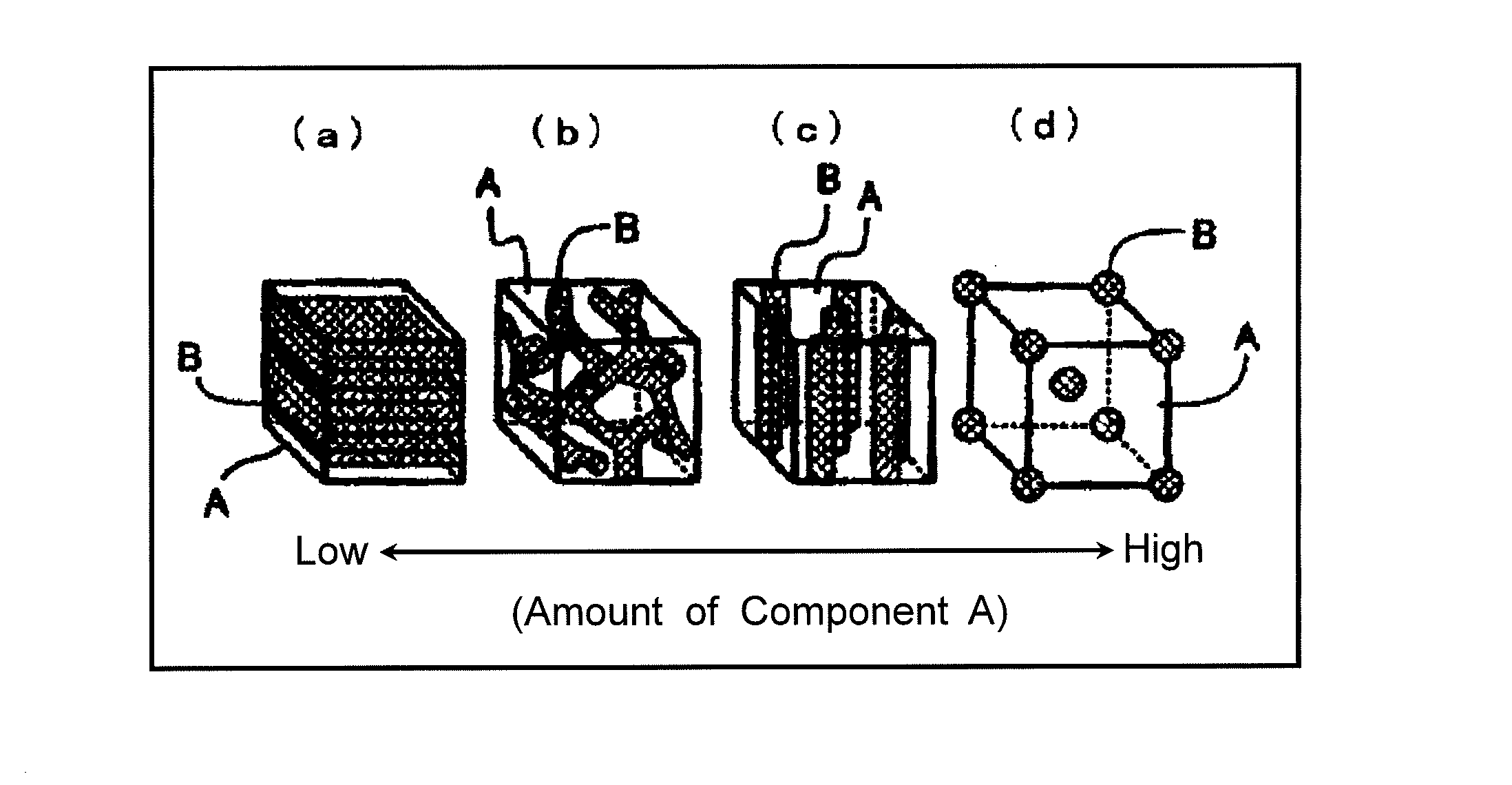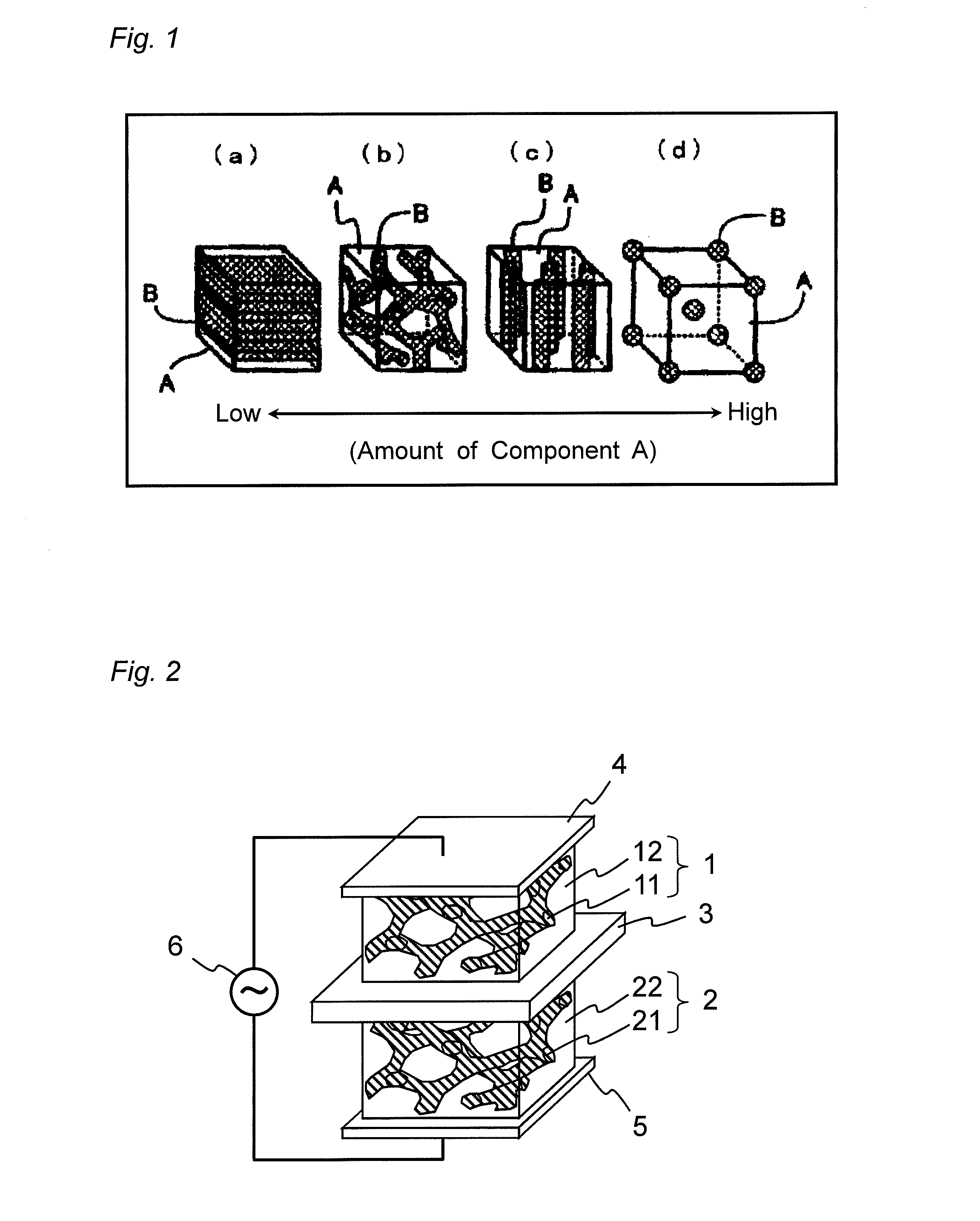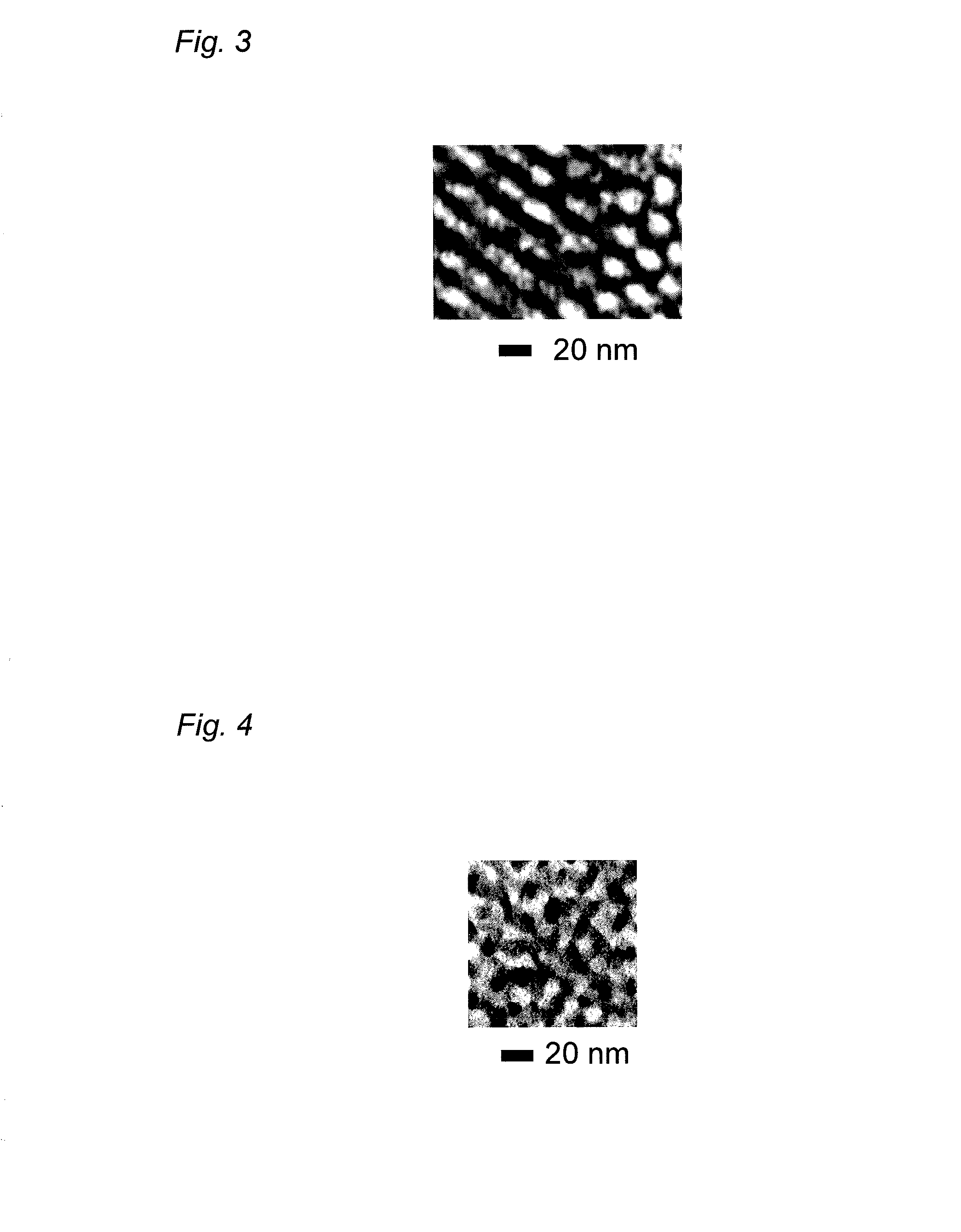Electrode material for lithium secondary battery, method for producing the same, and lithium secondary battery including the same
a lithium secondary battery and electrode material technology, applied in the direction of active material electrodes, non-aqueous electrolyte accumulator electrodes, cell components, etc., can solve the problems of insufficient output characteristics of lithium secondary batteries described in the reference, uneven charge transfer at the interface, etc., and achieve high utilization ratio
- Summary
- Abstract
- Description
- Claims
- Application Information
AI Technical Summary
Benefits of technology
Problems solved by technology
Method used
Image
Examples
example 1
[0082]A raw material solution was obtained by dissolving, in 10 mL of tetrahydrofuran (THF), 0.1 g of polystyrene-b-poly(4-vinylpyridine) (PS-b-P4VP, the number average molecular weight of the PS component: 400×103, the number average molecular weight of the P4VP component: 180×103) as a block copolymer, 0.037 g of lithium acrylate (CH2═CHCOOLi), 0.150 g of lanthanum acetate (La(CH3COO)3), and 0.138 g of cyclopentadienyl titanium chloride (Ti(CPD)Cl3) as a Li0.5La0.5TiO3 precursor (a Li precursor, a La precursor, and a Ti precursor), which was a lithium-ion conductor precursor, and 0.048 g of lithium phenoxide (PhOLi) and 0.274 g of cobalt phthalocyanine (CoPC) as a LiCoO2 precursor (a Li precursor and a Co precursor), which was a positive electrode active substance precursor.
[0083]Next, the obtained raw material solution was placed in a heat treatment container, and subjected to a heat treatment in an air stream at 650° C. for 3 hours. Thus, an inorganic structure (1 cm in diameter...
example 2
[0087]An inorganic structure (1 cm in diameter×8 μm) was fabricated in the same manner as in Example 1, except that 0.1 g of PS-b-P4VP whose PS component had a number average molecular weight of 340×103 and whose P4VP component had a number average molecular weight of 170×103 was used as a block copolymer, and that 0.048 g of lithium phenoxide (PhOLi) and 0.284 g of titanium phthalocyanine (TiPC) were used as a Li4Ti5O12 precursor (a Li precursor and a Ti precursor), which was a negative electrode active substance precursor, instead of the positive electrode active substance precursor.
[0088]The obtained inorganic structure was observed with a transmission electron microscope (TEM) in the same manner as in Example 1. As shown in FIG. 4, a nanoheterostructure was confirmed in which gyroid Li4Ti5O12 as a negative electrode active substance was three-dimensionally and periodically arranged in a Li0.5La0.5TiO3 matrix as a lithium-ion conductor.
[0089]Further, the small-angle X-ray diffrac...
example 3
[0091]An inorganic structure (1 cm in diameter×10 μm) was fabricated in the same manner as in Example 1, except that 0.1 g of PS-b-P4VP whose PS component had a number average molecular weight of 180×103 and a solubility parameter of 9.1 (cal / cm3)1 / 2, and whose P4VP component had a number average molecular weight of 400×103 and a solubility parameter of 12.0 (cal / cm3)1 / 2 was used as a block copolymer, that 0.04 g of lithium bis(trifluoroethyl)dithiocarbamate (LiFDDC, solubility parameter: 8.8 (cal / cm3)1 / 2), 0.12 g of lanthanum acetylacetonate (La(acac)3, solubility parameter: 9.0 (cal / cm3)1 / 2), and 0.25 g of titanium tetrachloride (TiCl4, solubility parameter: 9.0 (cal / cm3)1 / 2) were used as a Li0.5La0.5TiO3 precursor (a Li precursor, a La precursor, and a Ti precursor), which was a lithium-ion conductor precursor, and that 0.052 g of lithium pyrrolidine dithiocarbamate (LiPDC, solubility parameter: 11.4 (cal / cm3)1 / 2) and 0.251 g of cobalt pyrrolidine dithiocarbamate (CoPDC, solubili...
PUM
| Property | Measurement | Unit |
|---|---|---|
| length | aaaaa | aaaaa |
| pore diameter | aaaaa | aaaaa |
| shape | aaaaa | aaaaa |
Abstract
Description
Claims
Application Information
 Login to View More
Login to View More - R&D
- Intellectual Property
- Life Sciences
- Materials
- Tech Scout
- Unparalleled Data Quality
- Higher Quality Content
- 60% Fewer Hallucinations
Browse by: Latest US Patents, China's latest patents, Technical Efficacy Thesaurus, Application Domain, Technology Topic, Popular Technical Reports.
© 2025 PatSnap. All rights reserved.Legal|Privacy policy|Modern Slavery Act Transparency Statement|Sitemap|About US| Contact US: help@patsnap.com



